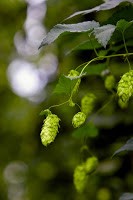Beeronomics Factors Affecting Your Pint
Post on: 28 Май, 2015 No Comment

Beer. You’ve seen it at sporting events, parties and backyard barbecues, but have you ever thought about just what goes into that can or bottle? Not the ingredients, the economics. The brewing industry is quite complex, and it takes more than just brewing technique to get your favorite beer into your local store or bar.
Beer, like any good, follows the rules of supply and demand. If one of its ingredients, such as hops, gets more expensive, the price of the end product can go up. If grain prices skyrocket due to increased demand for grain-based ethanol to fuel vehicles, beer prices can go up as well. What makes beer unique is the way it reacts to different economic conditions, and how your government regulates it. (For more read Economics Basics: Demand and Supply .)
What Type of Good is Beer?
The sudsy stuff might not be considered by most as a luxury good, but when it comes to the basics at the grocery store it seems to almost fall into the can live without category. So when times get tight, like they do during a recession, what happens to beer consumption? Turns out that recessions don’t necessarily lead to a drop in demand; they just lead to a different type of demand. Consumers switch from more expensive beer to the less expensive varieties, just like consumers switch from name brand goods to the store-brand version. The consumption is there, but it’s of the cheaper alternative. (This strategy can be profitable but only if you know when to dump these stocks The Ups And Downs Of Investing In Cyclical Stocks .)
Not only do recessions prompt consumers to switch from more expensive brews to more affordable ones, new demand is also coming from some unlikely sources: wine and liquor drinkers. When one considers the total market for alcohol-based products, wine and spirits have traditionally been sitting on the more expensive end of the scale. Consumers still looking for a certain level of luxury in their alcohol purchase seem to consider some beers as a viable alternative. One way that brewers have tapped into this trend is by offering beers with higher alcohol content, and by emphasizing the exclusivity of craft beers. This is not so dissimilar from any other industry, since suppliers will create new product offerings in order to meet burgeoning demand.

Beer Supply
The supply of beer has seen a number of changes in recent years, with increased production from traditional breweries as well as the emergence of craft breweries (those that use more traditional brewing ingredients and methods) and microbreweries (lower volume producers). While craft and microbrew beers tend to be more expensive than traditional beers, this isn’t necessarily because of prestige pricing. As is the general rule in economics, if demand for a certain beer is greater than the amount that the brewer can pump out, prices will be higher. Larger brewers benefit from economies of scale ; they are able to procure materials in bulk, have easier access to efficient transportation (beer available in more markets) and can produce a large volume of beer. This is a major factor into why mass-produced beer is less expensive.
Why are more craft and microbrew beers coming to the market? A combination of regulation changes (President Jimmy Carter signed a bill making home brewing legal in 1979), post-Prohibition rebuilding (many brewers declared bankruptcy during the American Prohibition) and shifting consumer tastes have led to an increase in different types of beer. Though craft, microbrew and traditional beers may target different markets, the overall effect of an increase in brewers is an increase in supply and an increase in competition.














